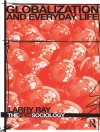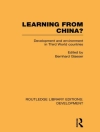With the development of the scanning tunneling microscope, nanoscience became an important discipline. Single atoms could be manipulated in a controlled manner, and it became possible to change matter at its ‘ultimate’ level; it is the level on which the properties of matter emerge. This possibility enables to construct and to produce devices, materials, etc. with very small sizes and completely new properties. That opens up new perspectives for technology and is in particular relevant in connection with nano-engineering.Nanosystems are unimaginably small and very fast. No doubt, this is an important characteristic. But there is another feature, possibly more relevant, in connection with nanoscience and nanotechnology. The essential point here is that we work at the ‘ultimate level’. This is the smallest level at which the properties of our world emerge, at which functional matter can exist. In particular, at this level biological individuality comes into existence. This situation can be expressed in absolute terms: This is not only the strongest material ever made, this is the strongest material it will ever be possible to make (D Ratner and M Ratner, Nanotechnology and Homeland Security). This is a very general statement. All aspects of matter are concerned here. Through the variation of the composition various forms of matter emerge with different items.Nanosystems are usually small, but they offer nevertheless the possibility to vary the structure of atomic (molecular) ensembles, creating a diversity of new material-specific properties. A large variety of experimental possibilities come into play and flexible theoretical tools are needed at the basic level. This is reflected in the different disciplines: In nanoscience and nanotechnology we have various directions: Materials science, functional nanomaterials, nanoparticles, food chemistry, medicine with brain research, quantum and molecular computing, bioinformatics, magnetic nanostructures, nano-optics, nano-electronics, etc.The properties of matter, which are involved within these nanodisciplines, are ultimate in character, i.e., their characteristic properties come into existence at this level. The book is organized in this respect.
Wolfram Schommers
TOPICS IN NANOSCIENCE (P2) [EPUB ebook]
Part II: Quantized Structures, Nanoelectronics, Thin Films
TOPICS IN NANOSCIENCE (P2) [EPUB ebook]
Part II: Quantized Structures, Nanoelectronics, Thin Films
Koop dit e-boek en ontvang er nog 1 GRATIS!
Taal Engels ● Formaat EPUB ● Pagina’s 408 ● ISBN 9789811243882 ● Bestandsgrootte 49.3 MB ● Editor Wolfram Schommers ● Uitgeverij World Scientific Publishing Company ● Stad Singapore ● Land SG ● Gepubliceerd 2021 ● Downloadbare 24 maanden ● Valuta EUR ● ID 8331257 ● Kopieerbeveiliging Adobe DRM
Vereist een DRM-compatibele e-boeklezer












